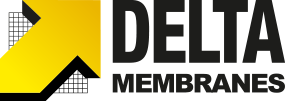This website uses cookies so that we can provide you with the best user experience possible. Cookie information is stored in your browser and performs functions such as recognising you when you return to our website and helping our team to understand which sections of the website you find most interesting and useful.
Roofing – challenges that need to be addressed
In the realm of roofing, there are several challenges that need to be addressed. These include The Building Safety Act, Regulations, product knowledge, application knowledge, weather-related issues, wear and tear, and the constant need for maintenance and repairs. Understanding these challenges is crucial for any homeowner or contractor in the roofing industry.
The Building Safety Act
The Building Safety Act is a significant piece of legislation that aims to improve the safety standards of buildings. It places a strong emphasis on fire safety and structural integrity, ensuring all buildings, especially residential ones, meet certain safety criteria. By implementing rigorous checks and safety measures, it significantly reduces the risk of building-related accidents and disasters. This act serves as a robust regulatory framework for the construction industry, enhancing accountability and ensuring the wellbeing of residents.
The Building Safety Act is comprehensive legislation that embodies elements such as supply chain management and necessitates a proficiency requirement. This Act takes a detailed approach towards building safety by including the entire supply chain in its scope and mandates competence, enhancing the overall safety standards.
Regulations
Under the new stipulations of the Building Regulations (B.Regs), all construction projects must assign specific roles. These individuals, termed as ‘duty holders’, bear the significant responsibility of approving all design and construction work, thereby ensuring accountability in compliance matters. The term ‘duty holders’ refers to persons or entities with legal obligations.
These include:
- Client
- Designer
- Contractor
- Principal designer
- Principal contractor
Interestingly, individuals can take on multiple duty holder roles simultaneously. A principal duty holder is a prime example of this, undertaking both the designer and contractor roles while also meeting additional principal duty holder requirements. The ‘designer’ is defined as any individual directing or conducting design work or guiding anyone under their authority to do the same. Understanding this wide-ranging interpretation is essential for accurately identifying roles and responsibilities within a business environment.
When involved in high-rise building design, keeping track of varying Building Fire Regulations based on building areas is vital. For instance, the rules for roofs differ significantly from those for balconies. Roof systems undergo complete build-up testing and rating, not just of the individual components or products. In contrast, balconies operate on a component-led system, necessitating each component to achieve an A-rating. This distinction is crucial to ensure adherence to safety standards in different building segments.
The European classification system comes with five ratings:
- B Roof(t4)
- C Roof(t4)
- D Roof(t4)
- E Roof(t4)
- F Roof(t4)
B Roof(t4) is the highest rating, whilst F Roof(t4) is the lowest.
In the realm of roofing systems, a classification of B Roof(t4) indicates a remarkable resistance to penetration for up to 60 minutes. During initial testing, sample materials exhibit a burning duration of under 5 minutes post removal from the test flame. This information provides a clear understanding of the durability and safety features inherent in B Roof(t4) systems.
Product Knowledge
Waterproofing designers must understand product combinations and system characteristics right from the beginning. They must also be well-versed in product features and properties, and how to integrate these into buildings and structures to achieve continuous, seamless waterproofing protection. Furthermore, various other factors need to be considered. These include the construction process, identifying potential ways the waterproofing solution could be compromised, and suggesting risk reduction and mitigation methods. For new structures, it is advised to consider the structural design, waterproofing design, and construction processes concurrently.
Following the Grenfell incident, there is an increased focus on the avoidance of inappropriate construction materials. This has sparked regulatory shifts, affecting the testing, certification and marketing processes of these products. These changes have significant implications for the construction industry, underlining the importance of safer, more regulated use of products. Evaluating a product’s functionality, design, and features and benefits is critical to determine its suitability for its intended purpose. This evaluation involves understanding the intended use of the product, its practicality, and how it meets the requirements of the building/structure’s construction. Through this, the product’s alignment with its purpose and its contribution to the project can be assured.
Delta Roof Guard
Delta Roof Guard – B Roof(t4) is a specially designed product that offers a flexible, elastomeric solution for roofing applications through a cold liquid application process. This product includes two variants, Delta Roof Guard CP and QC, which have the ability to bond directly to various surfaces. They create a seamless, UV-stable membrane that remains intact and doesn’t delaminate. The flexibility of Delta Roof Guard allows it to adapt to all shapes, enabling detailed application. Upon curing, it ensures a continuous finish without any joints or breaks and offers the advantage of rapid curing, even during the colder winter months.
Whether it’s a new project, an extension, or the refurbishment of an existing leaky roof, Roof Guard is your ready-to-use, cold applied answer. Why? It offers exceptional adhesion to both porous and non-porous substrates, guaranteeing a leak-free future for your property.
Always happy to Help
Whether your project is big or small, our friendly team at Delta is here for you every step of the way. You can count on us for sound technical advice, reliable support, and hands-on help when you most need it. Feel free to give us a call at 01992 523 523 or drop us an email at info@deltamembranes.com.




